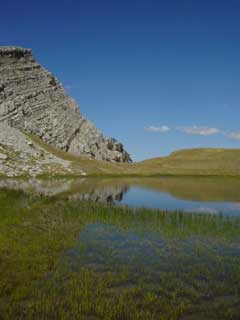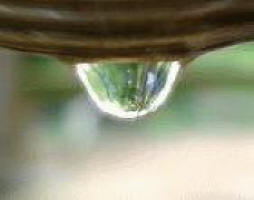Initiatives & Projects
 Sediment biobarriers for Chlorinated Aliphatic Hydrocarbons in groundwater
Sediment biobarriers for Chlorinated Aliphatic Hydrocarbons in groundwater
- Polluted groundwater in urban and industrial areas often represents a
continuous source of (diffuse) contamination of surface waters.However, the
fate of infiltrating groundwater pollutants might be influenced by the
sediment in eutrophic water bodies. Such sediments form an interface between
groundwater and surface water and possesses characteristic biological and
physico-chemical degradation properties. Knowledge on natural attenuation of
passing pollutants and the potential to stimulate and sustain occurring
degradation processes are however scarce or non-existent. This is especially
due to the lack of appropriate monitoring devices and tools to measure
in
situ mass balances of pollutants and reactants.
| Project number | 511254 | ||
|---|---|---|---|
| Subject(s) | HEALTH - HYGIENE - PATHOGENIC MICROORGANISM , HYDRAULICS - HYDROLOGY , PREVENTION AND NUISANCES POLLUTION | ||
| Acronym | SEDBARCAH | ||
| Geographical coverage | Germany, Czech Republic, Belgium, Netherlands | ||
| Budget (in €) | 1679758 | ||
| Programme | INCO MED (FP6) | ||
| Web site | http://www.vito.be/SEDBARCAH | ||
| Objectives | - In the SEDBARCAH project, we want to investigate the boundaries of the
sediment zone as a barrier against the infiltration of chlorinated aliphatic
hydrocarbons (CAH) into surface water and how we can turn this zone into a
sustainable and efficient (stimulated) biobarrier technology for protection
of surface waters from groundwater contamination. - We will (i) determine the role of the microbial community present in sediments in the biodegradation of groundwater pollutants infiltrating a river bed. - (ii) explore the boundary conditions and the possibility to increase and sustain removal activities in the sediment zone. - and (iii) select tools to follow such removal activities in situ. - Therefore, a thorough investigation both in the field and in the laboratory of the physicochemical and microbial processes occurring in these sediments will be performed and coupled to the CAH-degradation potential present in the sediment interface of two selected contaminated areas. In addition, methodologies to increase this degradation will be examined. - The final goal of SEDBARCAH is to investigate the potentials of these (stimulated) sediment biobarriers as a groundwater remediation technology and a surface water pollution and risk prevention technology. |
||
| Period | [01/01/2005 - 01/01/2007] | ||
 you are not logged in
you are not logged in





